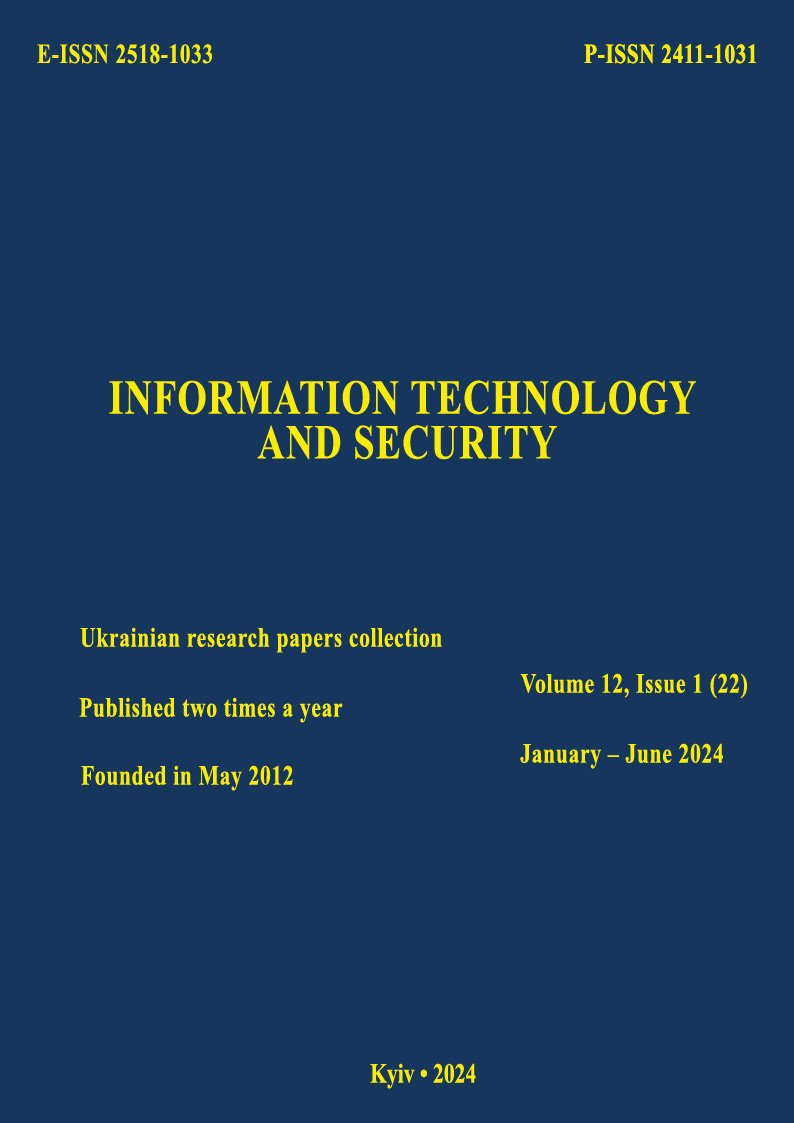Search for high-probability differential characteristics of the lightweight block cipher algorithm present with non-standard substitution blocks
DOI:
https://doi.org/10.20535/2411-1031.2024.12.1.306258Keywords:
cybersecurity, cyber defense, lightweight cryptography, differential cryptanalysis, encryption algorithm, substitution blocksAbstract
The development of the Internet of Things and the associated devices has made it necessary to establish and implement encryption standards to ensure secure data transmission. These standards need to be comply with fundamental encryption principles and cater to devices with limited computational resources. As a result, lightweight cryptography has emerged as a distinct field within cryptography. The PRESENT block cipher algorithm is a lightweight encryption algorithm designed for deployment in resource-constrained devices. It requires comprehensive and ongoing vulnerability analysis against both known and novel cryptanalysis methods. This work extensively investigates the PRESENT block cipher algorithm, examining its components, operational principles, and key scheduling algorithm. This study analyses existing research on the algorithm with regards to contemporary cryptanalysis methods. Differential cryptanalysis was selected as the method of choice. The requirements for constructing S-boxes, as set forth by the algorithm developers, are reviewed. Two alternative S-boxes are formulated and presented based on these requirements. The paper presents a methodology for identifying high-probability differential characteristics for the PRESENT algorithm, using a substitute substitution block that differs from the one proposed by the developers. The research reports on the encryption algorithm PRESENT, using alternative substitution blocks, and evaluates its resistance to differential cryptanalysis. The text presents the results of applying the methodology for searching differential characteristics to the substituted blocks in the PRESENT algorithm. A comparative analysis is made between the results obtained through the differential characteristic search methodology for the PRESENT algorithm with alternative substitution blocks and the known results for this algorithm.
References
DSTU ISO/IEC 29192-2:2016. Information Technology. Protection methods. Lightweight cryptography. Part 2. Block ciphers (ISO/IEC 29192-2:2012, IDT). [To replace DSTU ISO/IEC 29192-2:2015; valid from 2018-01-01]. Kyiv official publishing house: Technical Committee for Standardization “Information Technologies” (TK 20), 2018.
A. Bogdanov, L.R. Knudsen, G. Leander, C. Paar, A. Poschmann, M.J.B. Robshaw, Y. Seurin, and C. Vikkelsoe, “PRESENT: An Ultra-Lightweight Block Cipher”, in Proc. Cryptographic Hardware and Embedded Systems – CHES 2007, Vienna, Austria, pp. 450-466, 2007, doi: https://doi.org/10.1007/978-3-540-74735-2_31.
M. Siji, “Analysis and Implementation of the Ultra-Lightweight Block Cipher: PRESENT”, Journal of VLSI Design and its Advancement, vol. 3, no. 1, pp. 1-8, 2020.
M. Wang, “Differential Cryptanalysis of PRESENT”, in Proc. Progress in Cryptology – AFRICACRYPT 2008, Casablanca, Morocco, pp. 40-49, doi: https://doi.org/10.1007/978-3-540-68164-9_4.
M. Wang, Y. Sun, E. Tischhauser, and B. Preneel, “A Model for Structure Attacks, with Applications to PRESENT and Serpent”, Fast Software Encryption, 2012, pp. 49-68, doi: https://doi.org/10.1007/978-3-642-34047-5_4.
E. Biham, and A. Shamir, “Differential cryptanalysis of DES-like cryptosystems”, Journal of Cryptology, vol. 4, 1990, pp. 3-72, doi: https://doi.org/10.1007/3-540-38424-3_1.
Downloads
Published
How to Cite
Issue
Section
License
Copyright (c) 2024 Collection "Information Technology and Security"

This work is licensed under a Creative Commons Attribution 4.0 International License.
The authors that are published in this collection, agree to the following terms:
- The authors reserve the right to authorship of their work and pass the collection right of first publication this work is licensed under the Creative Commons Attribution License, which allows others to freely distribute the published work with the obligatory reference to the authors of the original work and the first publication of the work in this collection.
- The authors have the right to conclude an agreement on exclusive distribution of the work in the form in which it was published this anthology (for example, to place the work in a digital repository institution or to publish in the structure of the monograph), provided that references to the first publication of the work in this collection.
- Policy of the journal allows and encourages the placement of authors on the Internet (for example, in storage facilities or on personal web sites) the manuscript of the work, prior to the submission of the manuscript to the editor, and during its editorial processing, as it contributes to productive scientific discussion and positive effect on the efficiency and dynamics of citations of published work (see The Effect of Open Access).

